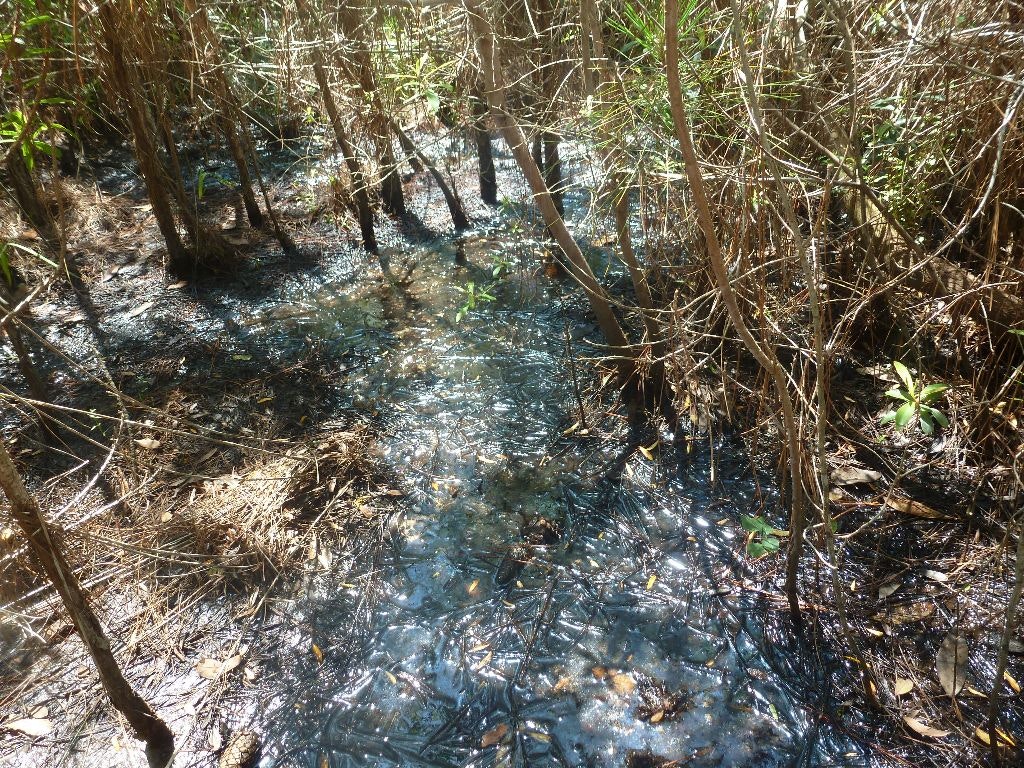Larviciding
Larviciding is controlling mosquitoes in their larval stage
Larvicides are applied directly to water sources that hold mosquito eggs and larva. By focusing on killing mosquitoes during their larval stage, they will never emerge into adults and bite people, and never transmit mosquito-borne diseases.

The district employs larviciding efforts to control the larval (aquatic) stage of the mosquito life cycle. Since this stage of mosquitois contained in a body of water, it is currently the most effective means for SWCMCD to control mosquito populations. Non-flowing, water retaining areas or man-made systems used to manage stormwater (catch basins, drainage retention areas, and roadside swales) are treated with biopesticides or larviciding oil. Biopesticides utilize either bacteria or insect growth regulators as a means of control by disrupting the normal development of mosquito larvae into adults. Larviciding oils cause larvae and pupae to drown.


Bacillus thuringiensis var. israelensis (Bti) and/or Bacillus sphaericus (Bs) bacteria are the same active ingredients used in many mosquito larvae control products sold in big box stores. The bacteria produce crystals that are toxic to mosquito larvae and a few closely related insects such as fungus gnats, black flies, and some midges. Ingestion of these crystals disturbs the larval gut, and younger larval stages (1st-3rd instars) die within a few hours to a few days, depending on whether Bti or Bs was administered. Bs requires a longer mode of action but tends to have a longer residual activity. 4th instar and pupal stages do not feed frequently or at all and may require a different means of control. The EPA and numerous studies conclude that these bacterial biopesticides are safe for non-target aquatic and terrestrial organisms, consequently providing effective mosquito control using environmentally sound practices.

Methoprene is an insect growth regulator used in mosquito control to prevent mosquito pupa from emerging into adults. Upon ingestion as larvae, it mimics the activity of an insect growth hormone, binding to the hormone’s receptors and preventing the immature mosquito from completing its life cycle to adult. Methoprene is classified as a biopesticide due to the low risk it presents to humans and other non-target species, except for estuarine invertebrates, freshwater fish, and amphibians. Though the EPA has deemed methoprene safe to use in fish-bearing waters due to its limited use in mosquito control, SWCMCD prefers to apply Methoprene-based larvicides only to man-made or closed systems to reduce exposure to “at risk” non-targets.
Larviciding oils, such as CocoBear, act as water surfactants. CocoBear is a product composed of modified coconut oil combined with mineral oil. Larvicide oils disperse and spread across the water, leaving a thin film on the surface. Applied to active breeding habitats, this film suffocates larvae and pupae by preventing them from breaching the water’s surface for air. The oil/film also makes it harder for mosquitoes to land on the water to lay their eggs. Larviciding oils are the only products capable of controlling 4th instar larvae and pupae. Larvicide oils are the last line of defense before the adult mosquitoes emerge. Oils are only applied to non-flowing water surfaces, usually in contained systems, to prevent run off.
All products are applied according to label and with the appropriate PPE.
Resources
Cocobear Label- EPA’s Controlling Mosquitoes in the Larval Stages: https://www.epa.gov/mosquitocontrol/controlling-mosquitoes-larval-stage







